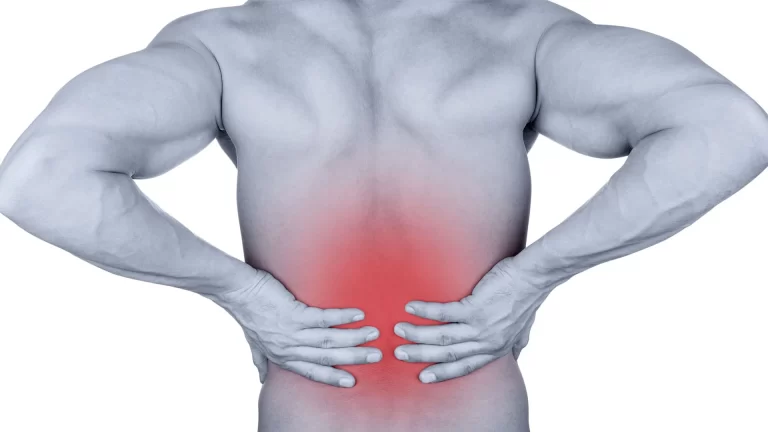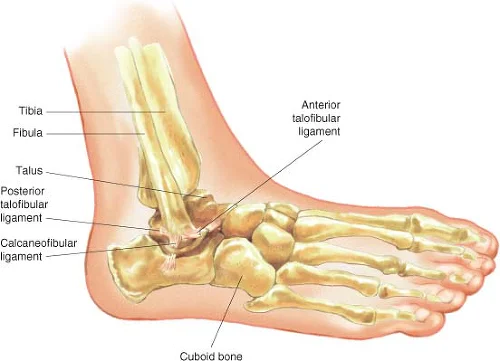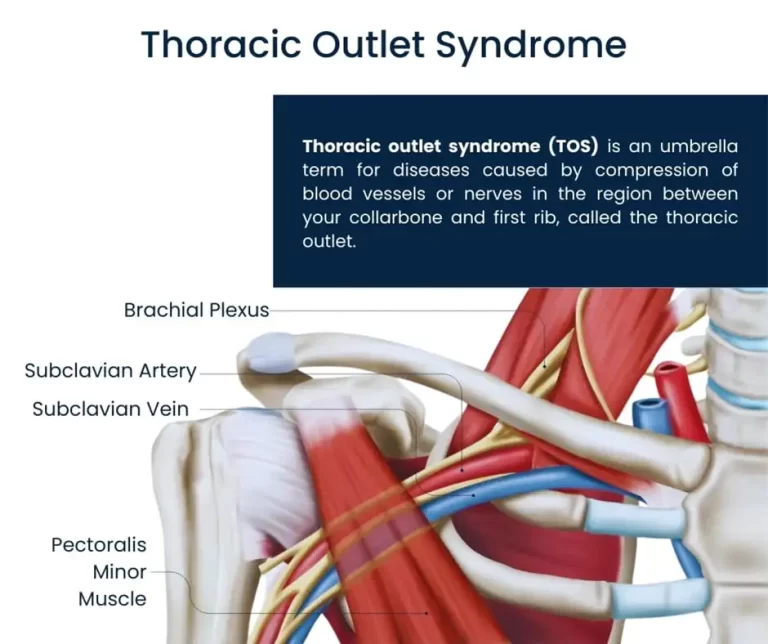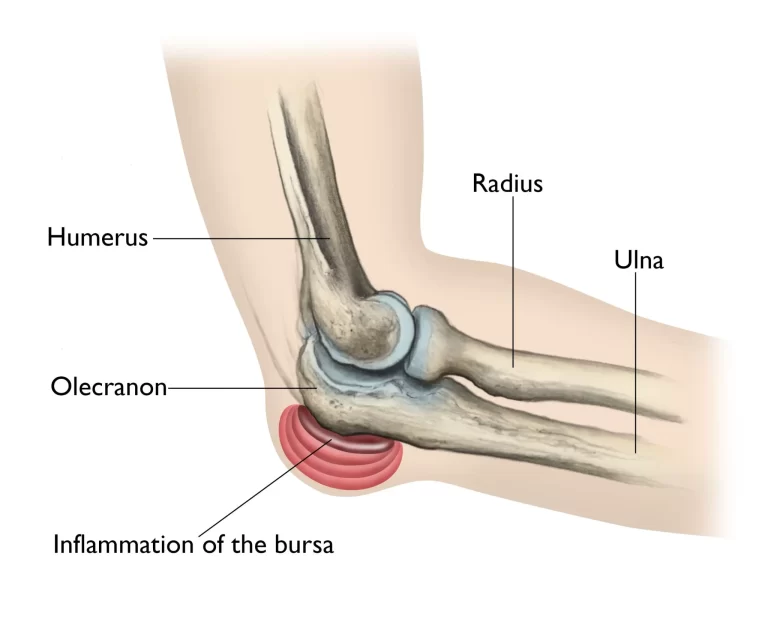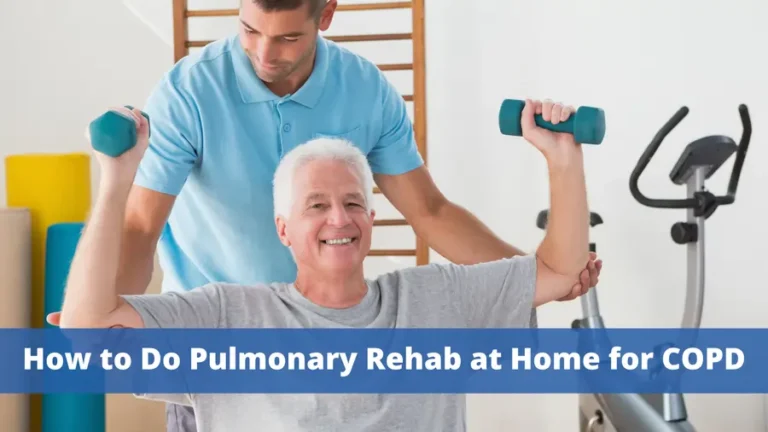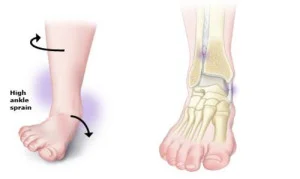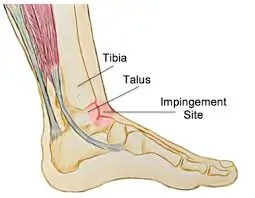Muscle Cramps
What are Muscle Cramps?
Muscle cramps are sudden, involuntary contractions of a muscle or group of muscles that can cause sharp pain and temporary immobility. They are common and can occur during physical activity or even while resting, often affecting muscles in the legs, feet, or hands.
Muscle cramps can occur at any point on the body, however they are most common in the legs and feet. People who have digestive issues or menstrual cramps may experience abdominal muscle cramps.
Muscle cramps are generally short and self-resolving. Some home treatments may help alleviate long-lasting cramps and their symptoms.
Anyone experiencing recurring cramping, however, should see their doctor for a diagnosis.
This page goes into greater depth about muscular cramps, including their causes, treatment, and prevention. It also outlines when to consult a doctor about this problem.
What does a cramp feel like?
The rapid tightening of any number of muscles in the area distinguishes muscle cramps. They may appear to have flexed their muscles even if they are calm. This tightness typically continues and causes discomfort when the muscle overcontracts.
The muscle may also appear to twitch or spasm.
In rare circumstances, such as muscles near the skin, the individual may be able to see the contraction. A stiff knot or lump of tissue can develop in the affected muscle.
What are the different forms of muscular cramps?
Skeletal muscle cramps are divided into four groups. They include,
- “True” cramp
- Tetany Contracts
- Dystonic Cramps
- Contracture cramps
Cramps are classified based on their many sources and muscle groups they impact.
True cramps
True cramps are caused by a single muscle or a group of muscles that function in tandem, such as the muscles that flex neighboring fingers or the legs.
Most specialists feel that true cramps are caused by overactive neurons that trigger the muscles. They cause a substantial number of muscular cramps.
Tetany
Tetany activates the body’s nerve cells, which excite the muscles. This reaction causes muscular spasms and cramps throughout the body. Tetany is named after the nerve-damaging impact of the tetanus toxin caused by a tetanus infection. However, the term is increasingly often used to describe muscular cramps caused by various disorders, such as low blood calcium and magnesium levels.
Tetanic cramps can also be caused by low calcium and magnesium levels, which promote nonspecific nerve tissue activity. Such cramps are frequently accompanied by indications of hyperactivity in other nerve activities and muscular activation. Low blood calcium levels, for example, can cause muscle spasms in the hands, wrists, and jaw, as well as numbness and tingling around the mouth and elsewhere.
Tetanic pains might sometimes appear to be genuine cramps. Tetany-related alterations in sensation or other nerve functions may go undetected because the cramping discomfort masks or distracts from them.
Dystonic Cramps
The fourth category is dystonic cramps, which cause muscles that are not needed for the desired activity to contract. This form of cramping affects muscles that function in the opposite direction of the intentional action, as well as those that accentuate the movement. Dystonic cramps often affect tiny muscle groups (e.g., eyes, jaws, neck, larynx). Hands and arms can be affected by repeated tasks such as handwriting (writer’s cramp), typing, playing various musical instruments, and many more. Each of these recurrent tasks may result in real cramps due to muscular exhaustion.
Contracture cramps
A contracture is a medical condition that produces muscular contractions. When a contracture occurs, the affected tissue is unable to move entirely, regardless of whether the accompanying muscle is active or relaxed. This is because scarred tissue cannot move in response to muscular contractions. As a result, the bodily component becomes fixed and loses its whole range of motion. The most frequent kind of contracture occurs in the palm and affects the tendons that ordinarily allow the fingers to shut while grasping. In most cases, this kind of contracture affects the ring fingers.
Causes of Muscle cramps:
A muscle cramp’s specific etiology is often difficult to determine. As one article points out, this is because what looks to be a simple cramp can encompass the entire human system, altering the person’s mental and physical health.
Cramps can be caused by a variety of factors, but the underlying reason is frequently unclear. Some muscles may spasm briefly before returning to normal.
Cramps can occur anywhere on the body, but they most usually affect the legs, notably the calves. According to one report, calf muscles account for around 80% of cramps.
The explanation for this might be that individuals use their calves throughout the day. However, the actual cause may be different in each situation.
Possible causes of transient cramps:
There are several possible causes of temporary muscle cramping. Issues that may cause cramping include:
- Overuse, prolonged posture, dehydration, and poor stretching can all contribute to musculoskeletal tension.
- Muscle atrophy due to aging
- Sarcopenia, or general muscle loss associated with aging, may also play a role.
According to the American Academy of Orthopaedic Surgeons, muscular cramps are more prevalent in the elderly due to natural muscle atrophy that occurs in the mid-40s.
Aged muscles do not work as hard or as quickly, and they may be more prone to overuse, which can cause cramping.
Other underlying problems.
Muscle cramping can occasionally indicate an underlying issue in the body, such as:
- A lack of electrolytes or minerals might result in nerve compression.
- Thyroid problems, cirrhosis, diabetes, and fibromyalgia are all possible reasons for insufficient blood flow.
- One of the potential risks associated with pregnancy is renal failure.
- Amyotrophic lateral sclerosis (ALS).
Night cramps
- Muscle cramps can occur at night as individuals sleep, usually in the legs.
- Muscle cramps at night can be caused by sleeping in the same position for an extended amount of time, holding an uncomfortable position in bed, or overusing the muscles throughout the day.
- Night cramps, like other forms of cramps, frequently lack a clear cause.
Menstrual cramps
- Period aches occur both before and throughout the menstrual cycle for people who menstruate often.
- The sensation may range from heaviness in the belly to severe cramping in the abdomen and pelvis.
- Period cramps cause pain because the uterus contracts. The uterus contracts during a menstrual cycle to release the uterine lining, which the body then passes through the vagina.
Symptoms of Muscle Cramps:
- Muscle cramp symptoms also contribute significantly to understanding the intensity of muscle cramps.
- To begin with, muscular cramp symptoms resemble a cramp. It might be a shooting pain depending on the severity with which the muscle contracts. Muscle cramps are sometimes accompanied by involuntary movement of surrounding joints in response to discomfort.
- Muscle twitching, stiffness, and discomfort are further signs of a cramp. The discomfort might range from a delicate vibration to intense frustration that makes you motionless. If the issue occurs frequently, it is recommended that you see a doctor to understand it better.
Diagnosis of muscle cramps:
If your muscular cramps are severe, do not go away with stretching, or last for a long time, you should see a doctor. This might be indicative of an underlying medical problem. Organisations might ask you anything like this:
- How frequently do your muscular cramps occur?
- What muscles are affected?
- Are you using any medications?
- Do you consume alcohol?
- What are your exercise habits?
- How much liquid do you consume daily?
You may also require a blood test to determine the amounts of potassium and calcium in your blood, as well as your kidney and thyroid function.
Your doctor may order an electromyogram (EMG). This test monitors muscle activity and looks for muscular anomalies. An MRI may also prove useful.
On occasion, a myelogram, or another imaging study, may be useful.
Please notify your doctor if you are suffering weakness, discomfort, or loss of feeling.
Who is in danger of muscular cramps?
Muscle cramps can affect anybody, but certain people are more prone to them.
- Older adults
- The patient is overweight
- Athletes
- Pregnant ladies
- Patients with certain medical conditions, such as thyroid and nerve illnesses
How to Prevent Muscle Cramps?
The most basic technique to prevent muscular cramps is to avoid or restrict movements that strain your muscles and induce cramping.
You might also:
- Stretch or warm up before engaging in sports or exercise. By missing the warm-up, you risk injuring or straining your muscles.
- Don’t work out immediately after eating.
- Drink plenty of water to avoid dehydration. When you work out, your body loses more water, so drink extra water.
- Drinking milk and orange juice, as well as eating bananas, can naturally increase your calcium and potassium consumption.
Which sorts of doctors cure muscular cramps?
Muscle cramps can be treated by a variety of medical professionals due to their numerous causes and forms. Patients would often contact their primary care provider, who may also be an internal medicine or family medicine expert.
If the cramps are caused by a sudden accident or sickness, emergency medical doctors will treat the patient. Cramps caused by certain medical disorders can be addressed by various professionals, including:
- Neurologists
- Internal Medicine/Family Medicine
- Emergency Medicine
- Orthopedists
- Nephrologists
- Endocrinologists
- Cardiologists
- Sports-medicine specialists
- Physiatrists
- Surgeons
How are muscular spasms (or cramps) treated?
If a condition that causes muscular cramping is identified, it is treated.
Stretching the concerned muscle regularly helps to relieve cramps. To alleviate a calf cramp, the individual in question can raise the foot and toes with one hand or execute the runner’s stretch. Massage may temporarily relieve certain types of cramping.
Most of the drugs used to prevent repeated cramps (including magnesium carbonate, calcium supplements, and benzodiazepines such as diazepam) have not proven to be effective, and they can cause negative effects. Quinine is no longer recommended as a therapy for muscular cramps because of its adverse effects, which include vomiting, irregular heart rhythms, ringing in the ears, eyesight problems, and migraines.
Physical therapy Treatment:
Physiotherapy can help with muscular spasms using a variety of methods. These can be used to manage both symptoms and the cause (if there is an underlying damage). Physiotherapy can help to alleviate muscular tension and give pain relief treatments.
Stretching
Stretching the area affected by the muscular spasm might help to improve or prevent the spasm from occurring. Stretching exercises for the thighs, calves, back, and neck are provided below.
Four stretches to relieve calf muscle cramps
Calf stretch.
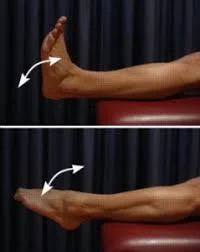
- Lie supine and stretch your leg by pointing or dragging your toes towards your head.
- Continue for a few seconds, or until the spasm ends.
- To gently drag the top of your foot towards you, put a strap or belt around it.
- This also causes hamstring muscle spasms.
Stretch for thigh cramps.
Quadriceps Stretching
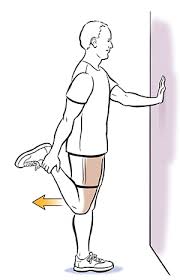
- To maintain equilibrium, stand and grasp onto a chair.
- Move around your leg across the hip to the knee, returning again.
Four stretches for back spasms
The easiest and most basic approach to stretching a back spasm is to move about. The end consequence will be relaxation of your back muscles and relief from spasms. Walk at a slow, steady speed to relax your back muscles.
Tennis ball stretching:
- Located on the bottom of a bed, place a tennis ball (or another small ball) beneath the spasm site for a few minutes.
- Attempt to relax and breathe properly.
- Rotate the ball to a nearby place and repeat.
Foam roller stretching:
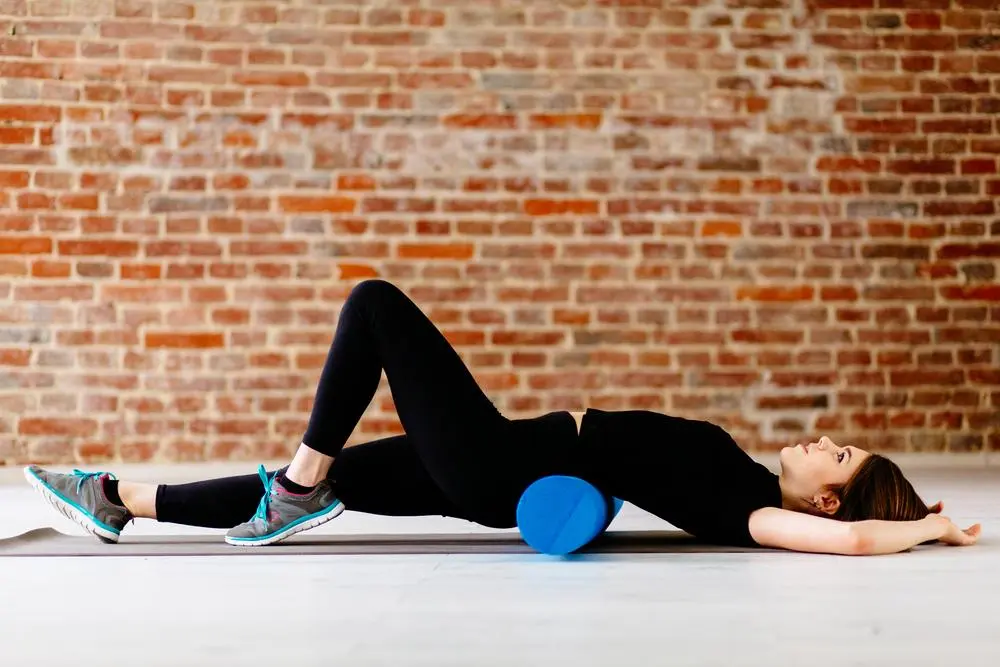
- Supine on the floor, and place a foam roller under your back.
- Move your back over the roller, up to your shoulder borders, then down to your stomach button.
- Keep your arms scratched across your chest.
Exercising ball stretch:
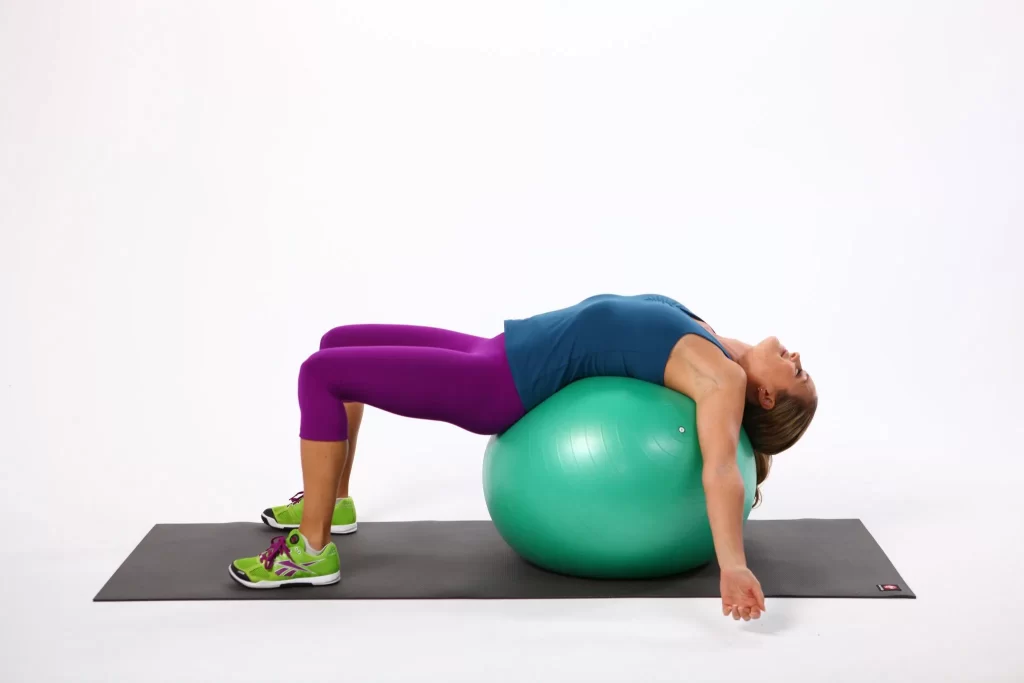
- put yourself down onto the gym ball and stretch your shoulders, back, and buttocks while keeping your feet at different levels with the ground. If you lose your balance, support yourself with a chair or a couch.
- Lie down for a few minutes.
Stretch for neck spasms.
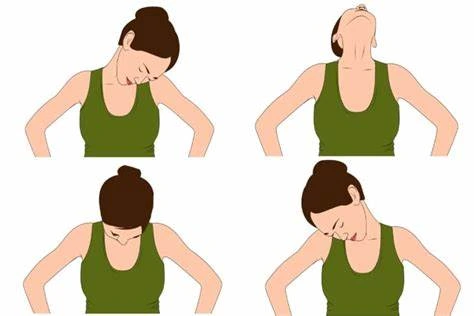
Rotate your shoulders while sitting or standing, moving them forward, backward, up, and down. Repeat this movement 10 times.
Roll your shoulders the opposite way, back, upwards, up, and down.
Repeat 10 circles in this way.
Shoulder rolls may be done anywhere, whether in a car, at a workplace, or when standing in a queue somewhere waiting.
- Shoulder rolls.
- Stretch for neck spasms.
Massage
- Massage may be a great technique to relieve physical pain and muscle cramping.
- Gently massage the spasming muscle.
Ice or Heat
Hot and cold treatment can be quite helpful in relieving pain and spasms.
To treat a persistent spasm, apply an ice pack to the muscle for 15 to 20 minutes at a time, many times a day. Make careful to cover the ice with a light towel or cloth so that it does not sit directly on your skin.
A heating pad on the site may also be effective for 15 to 20 minutes at a period, but only when combined with an ice pack. This is because, while heat feels wonderful on pains, it might worsen inflammation. Ice will reduce inflammation.
Hydration
- When you get a spasm, try drinking some water.
- To help reduce spasms, stay hydrated, especially if you’re exercising or the weather is hot.
- While recommendations for how much water you should drink vary depending on your needs, lifestyle, activities, and environment, here are some guidelines to follow.
Mild exercise.
Some patients discover that doing some mild exercise before bed will help them avoid leg spasms at night (which can affect up to 60% of adults).
Some examples of mild exercise include:
- Jogging in position.
- Exercise options include walking stairs, riding a static bike, rowing, and jumping on a trampoline.
- While little exertion can help, moderate or vigorous activity might disrupt your sleep, so avoid it shortly before bedtime.
Nonprescription medications
There are several medications you may take orally to aid with your muscle spasms:
- NSAIDs. Over-the-counter (OTC) medications, often known as nonsteroidal anti-inflammatory drugs (NSAIDs), are frequently used to treat inflammation and pain.
- Pickle juice. This is thought to function by restoring the electrolyte equilibrium.
- Supplements. Some individuals utilize vitamin B-12, salt tablets, and magnesium supplements to treat and reduce their muscular spasms. It’s important to note that there is minimal evidence to suggest that they are beneficial.
- Natural muscle relaxants. Natural muscle relaxants include incorporating capsaicin into meals, taking chamomile tea, and improving your sleep.
- Topical anti-inflammatory and pain-relieving treatments, including over-the-counter options, may help.
Hyperventilation
Hyperventilation occurs when you breathe harder and faster than usual. If you are afraid, hyperventilation may not be the best option for you because it might trigger emotions of panic.
Prescription medications
If you experience a persistent muscular spasm, especially if it is severe, your doctor or physician may prescribe a muscle relaxant or a pain medication.
muscular relaxants used to treat muscular spasms are referred to as centrally-acting skeletal muscle relaxants (SMRs), and they are often only prescribed for two to three weeks.
When to visit a doctor:
Many episodes of muscular cramps are transient, with symptoms coming and then disappearing shortly. In some instances, a person may require medical attention.
People who are in extreme terrible pain from muscular cramps should consult a doctor, especially if the discomfort persists. The indications and symptoms may include:
- Muscle weakness and edema
- Symptoms include numbness, skin discoloration, and rashes.
- Cramping that happens frequently or gets more common.
- More importantly, if home remedies fail to relieve your cramps, you may need to see a doctor.
A doctor can detect any underlying problems and provide treatments to alleviate the symptoms.
Summary:
Muscle cramps are common, yet the exact reason is often unknown. Certain variables, such as inappropriate stretching, muscular exertion, and electrolyte imbalances, may increase the likelihood of cramping.
Most cramps are just momentary, and they go away on their own or can be treated at home with simple remedies.
If cramps become severe, regular, or do not respond to home therapy, it is critical to consult a doctor for a diagnosis.
FAQs
What does a muscular spasm feel like?
Everyone experiences it differently. But you’ll probably know when it happens. Some muscular spasms generate twitching without discomfort. Some spasms are so painful that you remain immobilized until the conclusion. You may even notice that your muscle seems distorted or feels rigid to the touch.
Which deficiency produces muscle cramps?
Muscle cramps can be caused by deficiencies in the following vitamins and minerals:
Calcium.
Potassium.
Low magnesium levels.
Vitamin D.
If you suspect you have a vitamin or mineral deficit, speak with your doctor about taking supplements.
What causes severe muscular cramps throughout the body?
Severe muscular cramps throughout your body may suggest an electrolyte imbalance or a significant underlying medical issue such as atherosclerosis, thyroid illness, or multiple sclerosis (MS). If you have this sort of cramping, visit your local emergency department.
Is it feasible to avoid muscular cramps during an activity?
During the activity: To minimize cramps caused by severe physical activity, experts recommend stretching before and after exercise or sports, as well as a proper warm-up and cooling interval. Good hydration is essential before, during, and after the exercise, especially if it lasts more than an hour.
How do you treat muscular cramps?
Muscle cramps normally go away on their own in time. However, you may alleviate discomfort by stretching, drinking drinks, and applying heat and cold treatment to the damaged regions. Pain relievers and ointments can also be administered to the affected region to alleviate muscular cramping.
Is a spasm serious?
Muscle spasms, twitches, and cramps are not often cause for alarm. They are perfectly typical, particularly in sportsmen and other people who exercise often. However, in certain cases, they may indicate an underlying health condition, such as thyroid illness, multiple sclerosis, or liver cirrhosis.
What happens if a muscular spasm does not stop?
To treat a continuous spasm, use an ice pack on the muscle for 15 to 20 minutes at a time, multiple times each day. A heating pad on the site may also be effective for 15 to 20 minutes at a period, but keep in mind that with an ice pack.
References
- Schaefer, A. (2020, April 7). What Causes Leg Cramps? Healthline. https://www.healthline.com/health/pain-relief/what-causes-leg-cramps
- Muscle Spasms (Muscle Cramps). (2024, May 1). Cleveland Clinic. https://my.clevelandclinic.org/health/diseases/muscle-spasms-muscle-cramps
- StÖPpler, M. C., MD, & Mbbs, K. K. (2024, August 22). Muscle Cramp: Types, Causes, Diagnosis, Treatment & Prevention. MedicineNet. https://www.medicinenet.com/muscle_cramps/article.htm
- Johnson, J. (2021, January 28). What to know about muscle cramps. https://www.medicalnewstoday.com/articles/what-causes-cramps#summary
- Hirpara, D. (2023, December 13). Muscle Spasms – Causes, Symptoms, Treatment – Mobile Physio. Mobile Physiotherapy Clinic. https://mobilephysiotherapyclinic.in/muscle-spasms/

